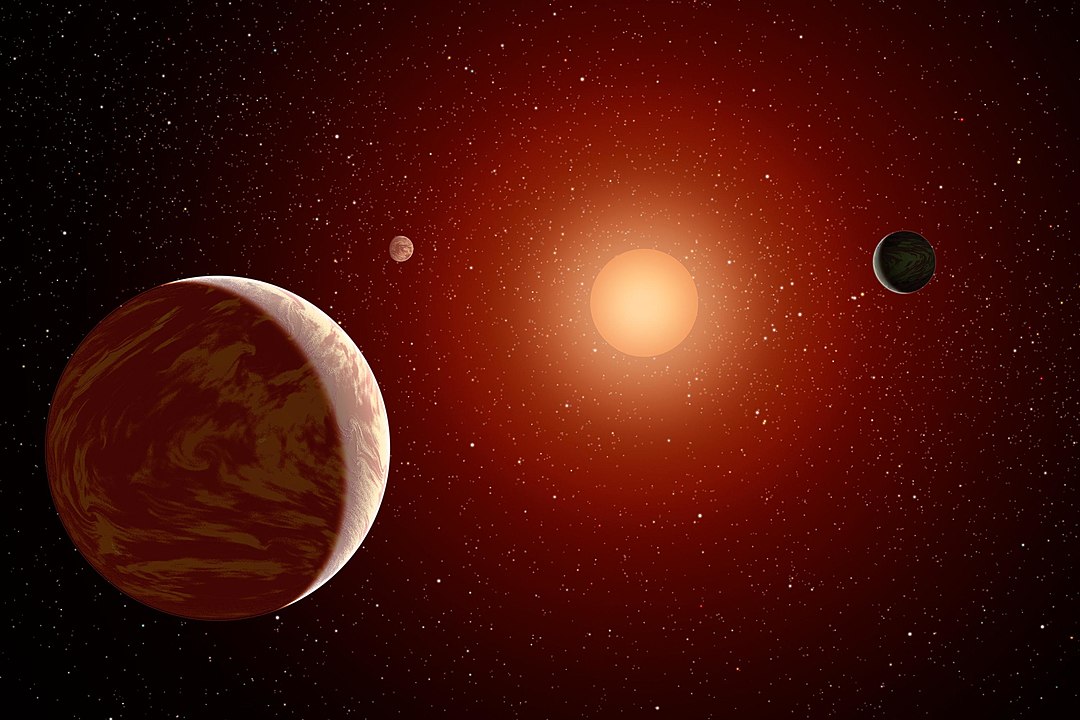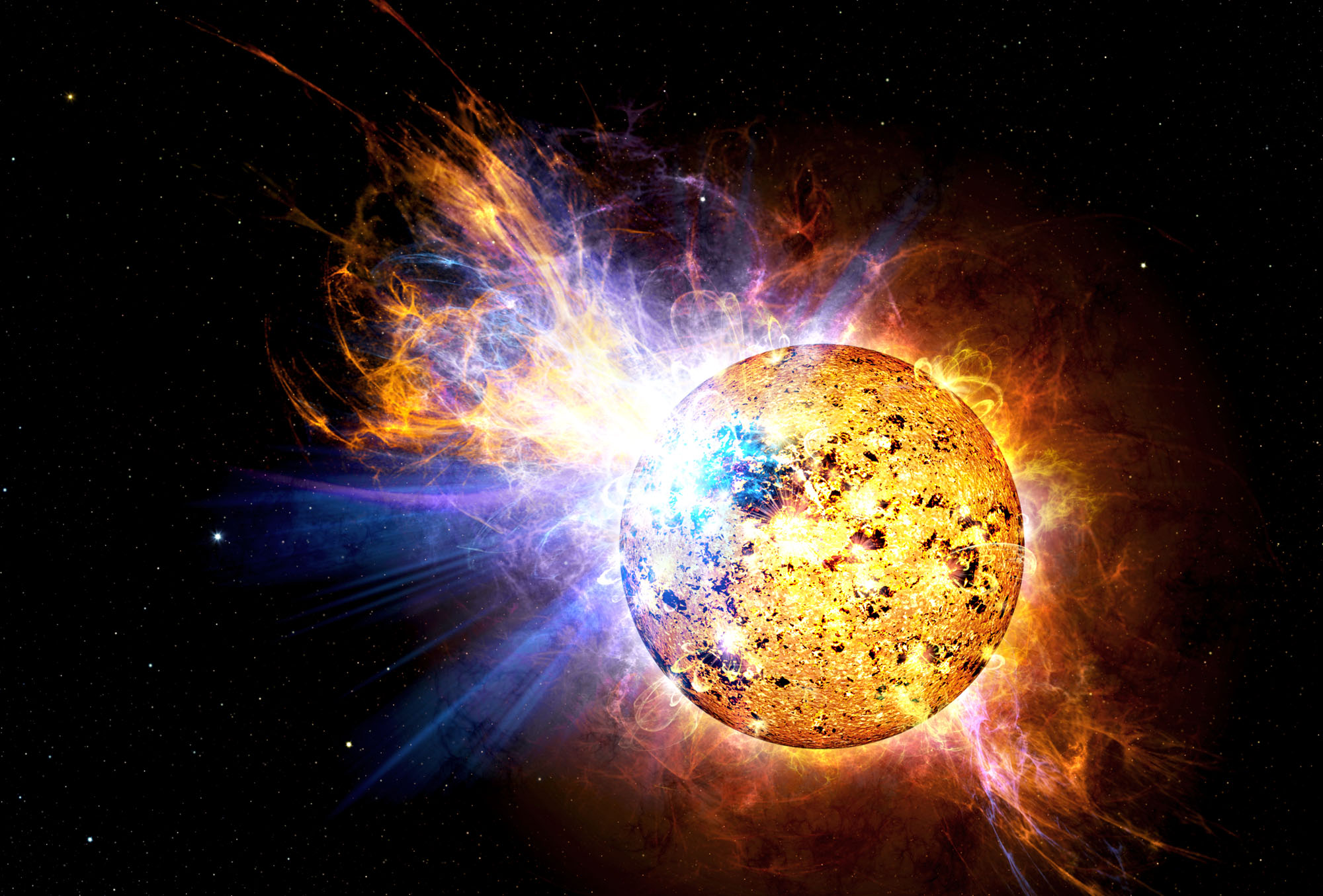In recent years, the number of known extrasolar planets (aka. exoplanets) has grown exponentially. To date, 5,799 exoplanets have been confirmed in 4,310 star systems, with thousands more candidates awaiting confirmation. What has been particularly interesting to astronomers is how M-type (red dwarf) stars appear to be very good at forming rocky planets. In particular, astronomers have detected many gas giants and planets that are several times the mass of Earth (Super-Earths) orbiting these low-mass, cooler stars.
Consider TOI-6383A, a cool dwarf star less than half the mass of the Sun that orbits with an even smaller, cooler companion – the red dwarf star TOI-6383B. In a recent study, an international team of astronomers with the Searching for Giant Exoplanets around M-dwarf Stars (GEMS) survey detected a giant planet transiting in front of the primary star, designated TOI-6383Ab. This planet is similar in size and mass to the system’s companion star, which raises questions about the formation of giant planets in red dwarf star systems.
Continue reading “Exoplanet Discovered in a Binary System Could Explain Why Red Dwarfs Form Massive Planets”



